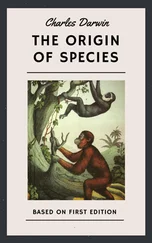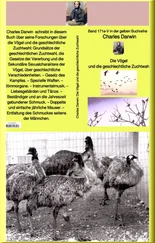Charles Darwin - Insectivorous Plants
Здесь есть возможность читать онлайн «Charles Darwin - Insectivorous Plants» — ознакомительный отрывок электронной книги совершенно бесплатно, а после прочтения отрывка купить полную версию. В некоторых случаях можно слушать аудио, скачать через торрент в формате fb2 и присутствует краткое содержание. Жанр: foreign_antique, foreign_prose, на английском языке. Описание произведения, (предисловие) а так же отзывы посетителей доступны на портале библиотеки ЛибКат.
- Название:Insectivorous Plants
- Автор:
- Жанр:
- Год:неизвестен
- ISBN:нет данных
- Рейтинг книги:5 / 5. Голосов: 1
-
Избранное:Добавить в избранное
- Отзывы:
-
Ваша оценка:
- 100
- 1
- 2
- 3
- 4
- 5
Insectivorous Plants: краткое содержание, описание и аннотация
Предлагаем к чтению аннотацию, описание, краткое содержание или предисловие (зависит от того, что написал сам автор книги «Insectivorous Plants»). Если вы не нашли необходимую информацию о книге — напишите в комментариях, мы постараемся отыскать её.
Insectivorous Plants — читать онлайн ознакомительный отрывок
Ниже представлен текст книги, разбитый по страницам. Система сохранения места последней прочитанной страницы, позволяет с удобством читать онлайн бесплатно книгу «Insectivorous Plants», без необходимости каждый раз заново искать на чём Вы остановились. Поставьте закладку, и сможете в любой момент перейти на страницу, на которой закончили чтение.
Интервал:
Закладка:
2
According to Nitschke ('Bot. Zeitung,' 1861, p. 224) the purple fluid results from the metamorphosis of chlorophyll. Mr. Sorby examined the colouring matter with the spectroscope, and informs me that it consists of the commonest species of erythrophyll, "which is often met with in leaves with low vitality, and in parts, like the petioles, which carry on leaf-functions in a very imperfect manner. All that can be said, therefore, is that the hairs (or tentacles) are coloured like parts of a leaf which do not fulfil their proper office."
Dr. Nitschke has discussed this subject in 'Bot. Zeitung,' 1861, p. 241 &c. See also Dr. Warming ('Sur la Diffrence entre les Trichomes' &c., 1873), who gives references to various publications. See also Groenland and Trcul 'Annal. des Sc. nat. bot.' (4th series), tom. iii. 1855, pp. 297 and 303.
3
Nitschke has elaborately described and figured these papillae, 'Bot. Zeitung,' 1861, pp. 234, 253, 254.
4
'Bot. Zeitung,' 1860, p. 246.
5
Owing to the extraordinary belief held by M. Ziegler ('Comptes rendus,' May 1872, p. 122), that albuminous substances, if held for a moment between the fingers, acquire the property of making the tentacles of Drosera contract, whereas, if not thus held, they have no such power, I tried some experiments with great care, but the results did not confirm this belief. Red-hot cinders were taken out of the fire, and bits of glass, cotton-thread, blotting paper and thin slices of cork were immersed in boiling water; and particles were then placed (every instrument with which they were touched having been previously immersed in boiling water) on the glands of several leaves, and they acted in exactly the same manner as other particles, which had been purposely handled for some time. Bits of a boiled egg, cut with a knife which had been washed in boiling water, also acted like any other animal substance. I breathed on some leaves for above a minute, and repeated the act two or three times, with my mouth close to [] them, but this produced no effect. I may here add, as showing that the leaves are not acted on by the odour of nitrogenous substances, that pieces of raw meat stuck on needles were fixed as close as possible, without actual contact, to several leaves, but produced no effect whatever. On the other hand, as we shall hereafter see, the vapours of certain volatile substances and fluids, such as of carbonate of ammonia, chloroform, certain essential oils, &c., cause inflection. M. Ziegler makes still more extraordinary statements with respect to the power of animal substances, which have been left close to, but not in contact with, sulphate of quinine. The action of salts of quinine will be described in a future chapter. Since the appearance of the paper above referred to, M. Ziegler has published a book on the same subject, entitled 'Atonicit et Zoicit,' 1874.)
6
My son Francis, guided by the observations of Dr. Burdon Sanderson on Dionaea, finds that if two needles are inserted into the blade of a leaf of Drosera, the tentacles do not move; but that if similar needles in connection with the secondary coil of a Du Bois inductive apparatus are inserted, the tentacles curve inwards in the course of a few minutes. My son hopes soon to publish an account of his observations.
7
Judging from an account of M. Heckel's observations, which I have only just seen quoted in the 'Gardeners' Chronicle' (Oct. 10, 1874), he appears to have observed a similar phenomenon in the stamens of Berberis, after they have been excited by a touch and have moved; for he says, "the contents of each individual cell are collected together in the centre of the cavity."
8
With other plants I have often seen what appears to be a true shrinking of the primordial utricle from the walls of the cells, caused by a solution of carbonate of ammonia, as likewise follows from mechanical injuries.
9
With respect to plants, Sachs, 'Trait de Bot.' 3rd edit., 1874, p. 864. On blood corpuscles, see 'Quarterly Journal of Microscopical Science,' April 1874, p. 185.'
10
According to Hofmeister (as quoted by Sachs, 'Trait de Bot.' 1874, p. 958), very slight pressure on the cell-membrane arrests immediately the movements of the protoplasm, and even determines its separation from the walls. But the process of aggregation is a different phenomenon, as it relates to the contents of the cells, and only secondarily to the layer of protoplasm which flows along the walls; though no doubt the effects of pressure or of a touch on the outside must be transmitted through this layer.
11
When my experiments on the effects of heat were made, I was not aware that the subject had been carefully investigated by several observers. For instance, Sachs is convinced ('Trait de Botanique,' 1874, pp. 772, 854) that the most different kinds of plants all perish if kept for 10 m. in water at 45o to 46 °Cent., or 113o to 115o Fahr.; and he concludes that the protoplasm within their cells always coagulates, if in a damp condition, at a temperature of between 50oand 60 °Cent., or 122o to 140o Fahr. Max Schultze and Khne (as quoted by Dr. Bastian in 'Contemp. Review,' 1874, p. 528) "found that the protoplasm of plant-cells, with which they experimented, was always killed and [] altered by a very brief exposure to a temperature of 118 1/2o Fahr. as a maximum." As my results are deduced from special phenomena, namely, the subsequent aggregation of the protoplasm and the re-expansion of the tentacles, they seem to me worth giving. We shall find that Drosera resists heat somewhat better than most other plants. That there should be considerable differences in this respect is not surprising, considering that some low vegetable organisms grow in hot springs – cases of which have been collected by Prof. Wyman ('American Journal of Science,' vol. xliv. 1867). Thus, Dr. Hooker found Confervae in water at 168o Fahr.; Humboldt, at 185o Fahr.; and Descloizeaux, at 208o Fahr.)
12
Sachs states ('Trait de Botanique,' 1874, p. 855) that the movements of the protoplasm in the hairs of a Cucurbita ceased after they were exposed for 1 m. in water to a temperature of 47o to 48 °Cent., or 117o to 119o Fahr.
13
'Trait de Bot.' 1874, p. 1034.
14
As the opacity and porcelain-like appearance of the glands is probably due to the coagulation of the albumen, I may add, on the authority of Dr. Burdon Sanderson, that albumen coagulates at about 155o, but, in presence of acids, the temperature of coagulation is lower. The leaves of Drosera contain an acid, and perhaps a difference in the amount contained may account for the slight differences in the results above recorded.
It appears that cold-blooded animals are, as might have been expected, far more sensitive to an increase of temperature than is Drosera. Thus, as I hear from Dr. Burdon Sanderson, a frog begins to be distressed in water at a temperature of only 85o Fahr. At 95o the muscles become rigid, and the animal dies in a stiffened condition.
15
Mucus from the air-passages is said in Marshall, 'Outlines of Physiology,' vol. ii. 1867, p. 364, to contain some albumen.
Mller's 'Elements of Physiology,' Eng. Trans. vol. i., p. 514.
16
Watts' 'Dictionary of Chemistry,' vol. iii., p. 568.
'Leons sur la Phys. de la Digestion,' tom. i, p. 379; tom. ii. pp. 154, 166, on legumin.
17
The leaves of young plants, before the heart is formed, such as were used by me, contain 2.1 per cent. of albuminous matter, and the outer leaves of mature plants 1.6 per cent. Watts' 'Dictionary of Chemistry,' vol. i. p. 653.
Читать дальшеИнтервал:
Закладка:
Похожие книги на «Insectivorous Plants»
Представляем Вашему вниманию похожие книги на «Insectivorous Plants» списком для выбора. Мы отобрали схожую по названию и смыслу литературу в надежде предоставить читателям больше вариантов отыскать новые, интересные, ещё непрочитанные произведения.
Обсуждение, отзывы о книге «Insectivorous Plants» и просто собственные мнения читателей. Оставьте ваши комментарии, напишите, что Вы думаете о произведении, его смысле или главных героях. Укажите что конкретно понравилось, а что нет, и почему Вы так считаете.












